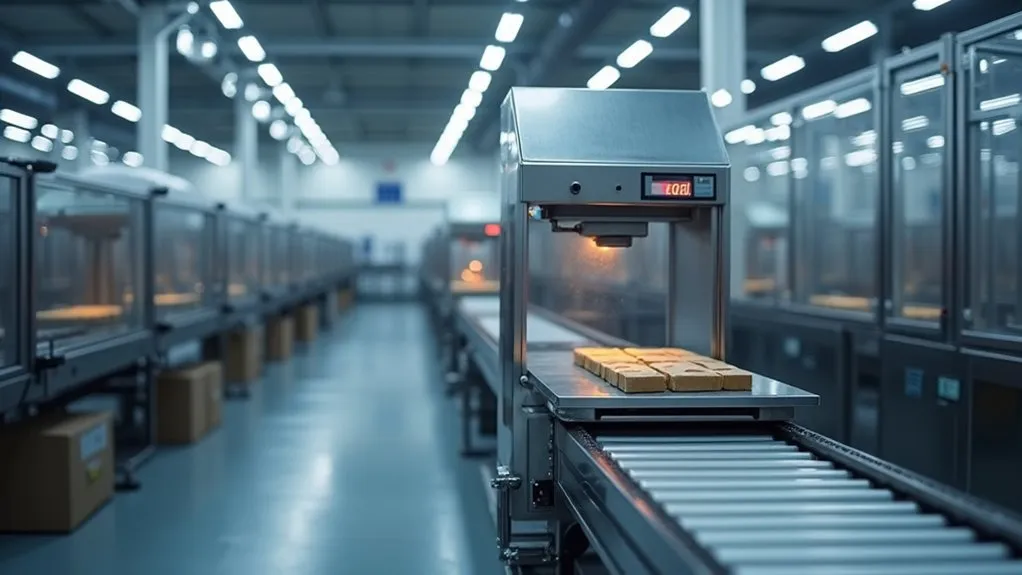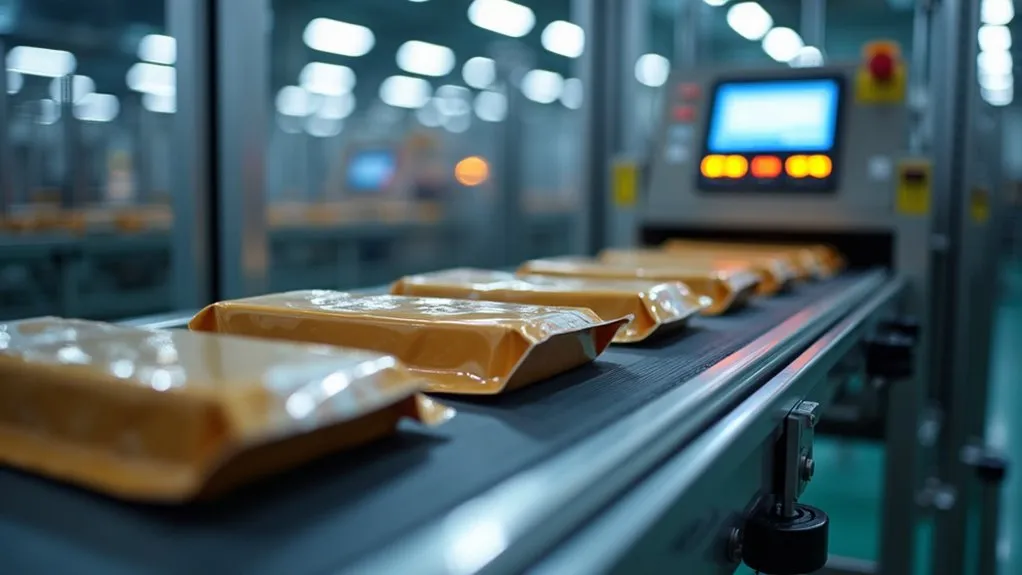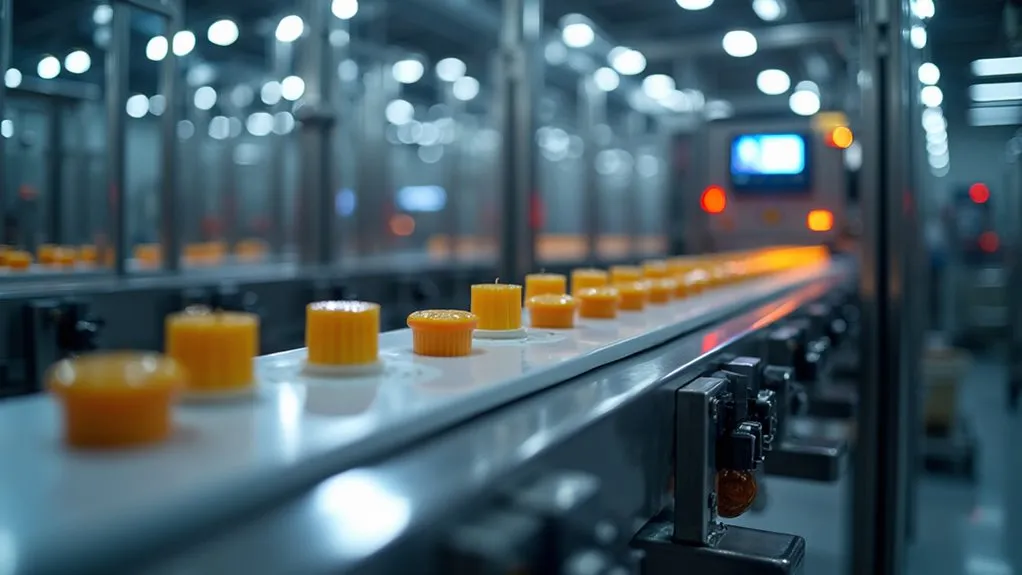A checkweigher machine is a precision tool used in manufacturing to verify product weights against set standards. It ensures quality control and compliance with regulations. Functionally, it integrates conveyor belts with infeed, weigh, and outfeed sections, using load cells like strain gauges to detect mass. A central controller processes signals, comparing weights to thresholds with high accuracy via multiple readings. Explore further to uncover deeper insights into its diverse applications and benefits.
Key Takeaways
- A checkweigher machine is a device for verifying product weights in manufacturing and packaging.
- It ensures compliance with net content regulations and quality control standards.
- It operates using conveyor belts and load cells to detect mass accurately.
- A central controller compares weights against set thresholds for sorting or rejection.
- It enhances efficiency by automating weight checks and reducing material waste.
Defining the Checkweigher Machine

A checkweigher machine is an automatic or manual weighing device specifically designed to verify that products meet predetermined weight criteria during manufacturing or packaging processes. Employed across industries such as food, pharmaceuticals, and logistics, it serves as a critical quality control tool, ensuring compliance with net content regulations by identifying underweight or overweight packages. The system classifies items into preset weight zones, facilitating precise sorting or rejection of non-conforming products. By integrating advanced technology, checkweighers enhance quality control by swiftly detecting deviations in product weights to maintain consistency.
Delving into its Historical Origins, the concept of checkweighing traces back to industrial needs for accurate weight verification, initially performed by individuals, such as those checking miners’ coal or ore. The Etymology Debate surrounding “checkweigher” reflects ambiguity, with some linking it to “check” as verification, while others tie it to historical weighing roles. This specialized equipment has evolved into a cornerstone of modern production, ensuring consistency and regulatory adherence in packaged commodities.
Operational Mechanism of Checkweighers

Delving into the operational mechanism of checkweighers reveals a sophisticated interplay of mechanical and electronic components designed for precision in weight verification. These systems integrate conveyor belts—spanning infeed, weigh, and outfeed sections—to facilitate Dynamic Weighing, where products are measured in motion. The infeed belt ensures proper spacing and speed, while the weigh belt employs load cells, such as strain gauge or electromagnetic force restoration types, to detect mass via electrical signals.
A central controller processes these signals, comparing weights against predefined thresholds to classify items. Accuracy is maintained through multiple readings during transit and features like Auto Zeroing, which automatically adjusts the zero point to counter environmental variables or residue. Conveyor mediums, whether belts or chains, adapt to specific product needs, ensuring stability during measurement. This seamless coordination of conveyors, sensors, and processing units underpins the checkweigher’s ability to deliver precise, high-speed weight verification in industrial settings.
Key Benefits and Applications of Checkweighers

How do checkweighers contribute to industrial efficiency and compliance? These precision instruments play a pivotal role in modern industries by ensuring product weight accuracy and adherence to stringent standards. They deliver significant Regulatory Benefits by aligning with packaging laws and quality benchmarks like FDA and USDA/FSIS, preventing fines and recalls due to weight discrepancies. Simultaneously, they drive Efficiency Gains by automating weight verification, boosting throughput, and minimizing material waste through reduced overfilling.
Checkweighers ensure industrial efficiency and compliance by automating weight checks, aligning with strict regulations, and reducing waste for optimal production outcomes.
Their impact spans diverse sectors with measurable advantages, such as:
- Food & Beverage: Ensuring consistent weights for packaged goods.
- Pharmaceuticals: Guaranteeing precise dosage weights for safety.
- Manufacturing: Verifying component weights in assembly kits.
- Logistics: Confirming shipping package accuracy.
Beyond compliance, checkweighers optimize production by integrating with other systems, providing data for process analysis, and lowering operational costs, thus enhancing overall profitability and quality control across high-speed industrial lines.

 Tiếng Việt
Tiếng Việt 日本語
日本語 中文 (中国)
中文 (中国) 한국어
한국어
